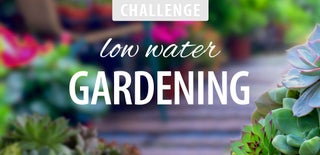Introduction: DIY Irrigation Pots - a Modern Take on an Ancient Technique
Ollahs (pronounced 'oy-yahs') are traditional unglazed pots, which are sunk into the soil around the base of plants. The idea is simple, you fill the ollahs with water, which gradually seeps out through the porous container directly to the roots of the plant you want to water. It is an excellent technique because -
- It reduces surface evaporation
- It keeps plants constantly watered
- It cuts down the time it takes to water your garden or allotment
- It saves water
Here's a wikipedia page explaining them - https://en.wikipedia.org/wiki/Olla
But ollahs can be expensive to buy, and if you can't find anywhere that stocks them then you'll have to commission a potter to make some for you. Or you could just follow this easy Instructable and make one for under $5.
Step 1: What You'll Need...
To make an ollah you will need some simple materials. These are as follows -
- Two ceramic unglazed pots.These need to be the same size, and it is essential that they are unglazed. The ones I am using here are 13cm diameter pots, and cost me under $1 at the garden centre.
- A small ceramic saucer. This needs to be able to sit into the bottom of the pots you've selected. In order to do this I bought the smallest available. It isn't essential that it is unglazed.
- Some glue.I'm using UHU Max Repair Extreme, because it is waterproof, flexible and suitable for unglazed terracotta.
Step 2: Seal the Hole in One Pot
The first thing you have to do for this Instructable is to seal the hole at the bottom of one of the pots. The reason that you do this is simple; if not, all the water is going to run out too quickly and the ollah becomes useless.
Put glue around the bottom of the saucer, and be very generous with the amount you put on. Invert it, and then place it in the bottom of the pot.
Step 3: Put the Two Pots Together
Once a hole is sealed at the bottom of one pot, spread glue around the top edge of that pot. Again, be generous with the amount you use - it doesn't have to look nice, it has to be watertight.
Now invert the second pot so that the top edges of both come together. Spread additional glue around the join to reinforce it.
Step 4: Let the Glue Dry
Now is time to congratulate yourself on a job almost done. Put a couple of heavy books on the pots, and leave to dry. In the meantime, have a cup of tea, read a book, learn how to play the ukulele or do something else entirely.
Step 5: Dig a Hole
Once the pots are glued together, and the glue is dry, dig a hole in the ground or the pot that you wish to water. I am planting my ollah into a 80l pot which contains an apple tree.
I live on the 8th floor, with a roof terrace that faces due south. Sometimes the pot dries out completely between me watering it in the morning and evening (it's 35degrees celsius in the summer here). The fluctuation between wet and dry puts stress on the tree and that's one of the reasons we've had few apples from it this year. With constant watering from the ollah, the apple tree will hopefully have a happy summer.
In order to sink the ollah you want to dig your hole almost as deep as the pots are tall. Sink the ollah into the hole, and leave about 3cm or 1inch above the soil line. I've also added bark chips to the top of the soil, because it makes the pots look a bit neater.
Step 6: Fill It Up!
Now all that is left to do is fill up the pot. My ollah holds about 1.5l of water, which means that in the height of summer I will most likely have to fill it up every day. However in the spring and autumn it will be good to be left a week between filling it up.
Step 7: Things to Remember...
Finally, there are a few things you want to remember if you are planning on using ollahs to water your plants...
- Don't let them dry out completely. This can be bad for your plants because it leaves them without water, and because the ollahs can build up salt and residue from the water you use. As a rule of thumb try to keep some water in them at all times.
- Remove them before the winter if you get ground frost. If your ground freezes then the pot will crack and be useless next year.
- If you are making pots smaller than this one, its a good idea to put a stone over the opening at the top which will help with surface evaporation.
Thanks for reading this Instructable and let me know how your garden gets on when using them. You can follow my garden adventures at www.planteatrepeat.com.

Runner Up in the
Low Water Gardening Challenge 2016













